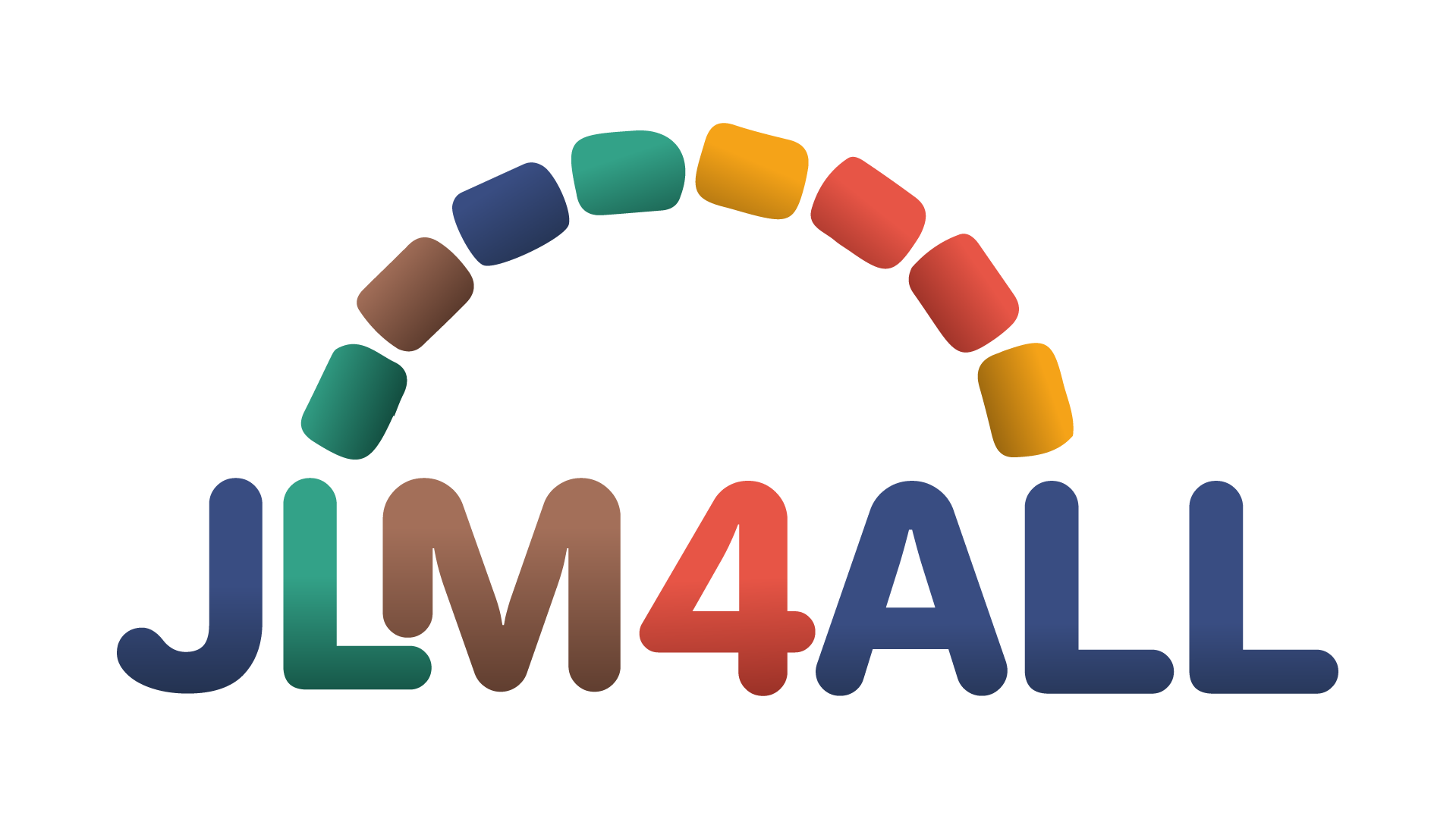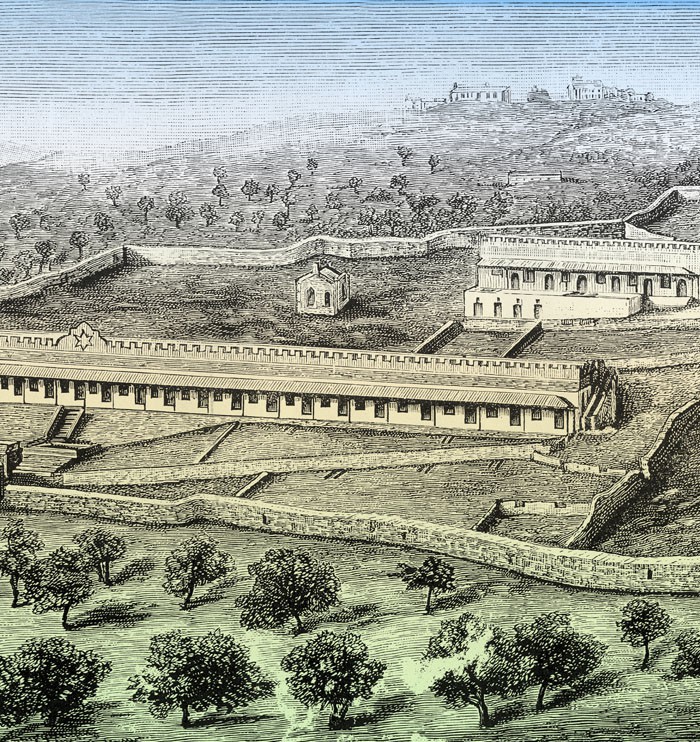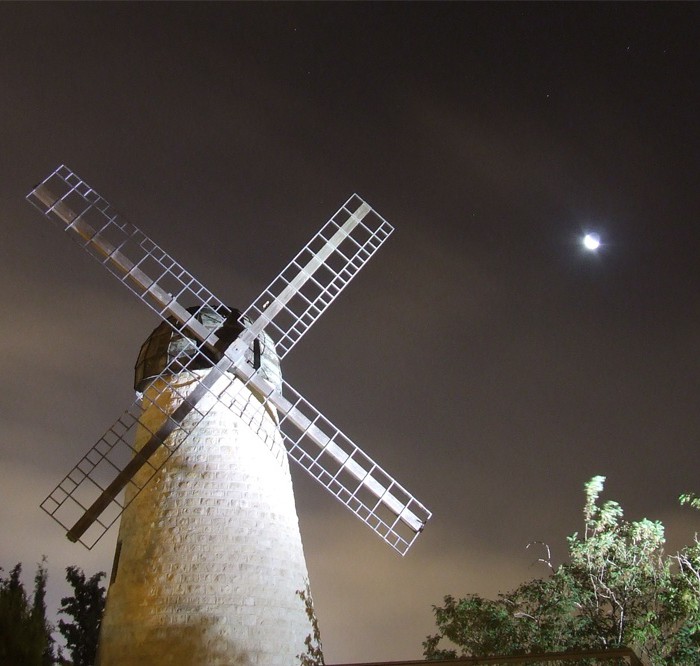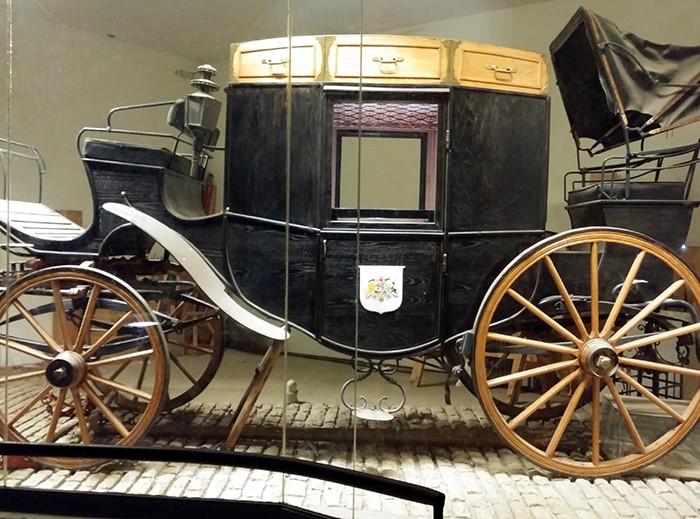In 1860, construction began on the first neighborhood outside the walls. The new neighborhood included 22 apartments designated for families and a synagogue. The idea was that the residents would be replaced every three years; however, since it was hard to convince people to move there, it was decided that the courageous people moving out of the city gates and living in isolation there, would be granted the right to permanent residence in their homes. The apartments were divided equally between Ashkenazi and Sephardic Jews, 10 apartments and a synagogue each. Life in Mishkenot Sha’ananim was far better than that of the Old City residents. The homes were considered spacious; each apartment had two rooms and a yard, as opposed to the Old City where families were crowded into single room dwellings. Life in the neighborhood was managed according to regulations made by the residents. For example, there was a regulation stating that wells and pools would be closed, and the key kept by the synagogue managers (gabaim); thus, the water was kept clean. Not just anybody who wanted to could go and take for himself. The best way to illustrate how much better life was outside of the walls is the cholera epidemic that broke out in the Old City in 1865. Mishkenot Sha’ananim residents were not affected by that epidemic. The people of Jerusalem then decided that quick action should be taken to enable more Jews to move outside the walls. Thus, building began on additional neighborhoods beyond the confines of the ancient walls.
In the War of Independence, the Haganah exploited the height of the windmill and set up a position at its top. The British were aware of this and destroyed it with a controlled explosion, and then rebuilt the damaged section.
At present, the houses of Mishkenot Sha’ananim are home to several institutions connected with artistic and cultural activity, including the Jerusalem Music Center where students of music meet renowned musicians from all over the world. The Jerusalem Center for Ethics also occupies a home in Mishkenot Sha’ananim. The rest of the homes have become the Konrad Adenauer Conference Center, under supervision of the Jerusalem Foundation.
Read more




